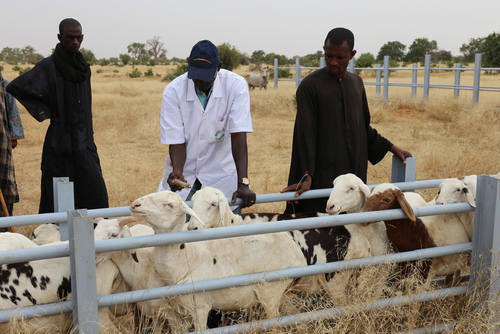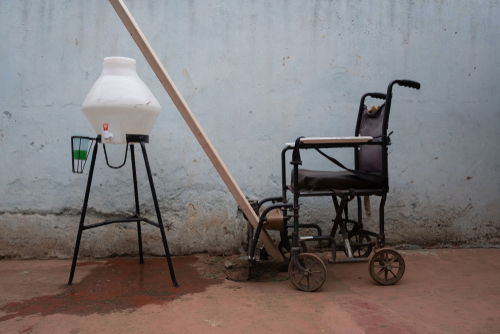April 30, 2024

Skyrocketing costs linked to Alzheimer’s care will hit heaviest in upper-middle-income countries.
OHT researcher Dr. Arindam Nandi was featured in Scientific American for his study, which found that the estimated global cost of care associated with Alzheimer’s disease and related dementias was approximately US$ 2 trillion in 2019. The study predicted this number could rise to a minimum of about US$ 10 trillion by 2050. Moreover, this economic burden is expected to shift away from high-income countries to upper-middle-income countries. Given the aging global population and lack of treatment options for Alzheimer’s patients, substantial investment in the prevention and management of Alzheimer’s disease and related dementias is urgently needed. [Scientific American]
Biases in antibiotic prescribing in the United States
A systematic scoping review revealed a range of individual patient and community factors associated with antibiotic prescribing trends in the United States. Patients from marginalized ethnic and racial groups were more likely to be diagnosed with a condition warranting antibiotics and less likely to receive antibiotics. Furthermore, the study observed a strong association between residence in the southern United States and antibiotic prescribing across various clinical settings, specialties, and diagnoses. [Open Forum Infectious Diseases]
Increased vigilance and preparedness are needed to prevent an avian influenza pandemic.
Recent reports of H5N1 avian influenza detected in cattle and one dairy worker in the United States have prompted reassurances from health officials, but scientists call for increased vigilance and concern for the potential rapid spread of the virus. A limited supply of existing avian influenza vaccines that were manufactured against a different viral strain is unlikely to help prevent or mitigate a pandemic, even if it were deployed in the early stages. Time to intervention is critical since FDA-approved antiviral drugs must be administered within the first 48 hours of the onset of symptoms, posing logistical challenges if a more streamlined protocol is not established before the first signs of a pandemic. [STAT]
Nigeria leads the roll-out of a multivalent meningitis vaccine
Nigeria is the first country to roll out Men5CV, a new vaccine that confers protection against five strains of the meningitis-causing bacteria, Neisseria meningitidis. The vaccine roll-out campaign in March 2024 targeted over 1 million people between 1 and 29 years old to control the most recent outbreak of 1.742 suspected and 101 confirmed cases, which has resulted in 153 deaths. [WHO]
Children and vulnerable populations are most affected by high-burden pathogens.
A recent analysis of the Global Burden of Disease Study 2019 data estimates that 85 pathogens were associated with 704 million disability-adjusted life-years (DALYs) in 2019. Concerningly, three-fourths of these pathogens lack a corresponding vaccine, and the majority of the resulting infections disproportionately burden under-five children and individuals in low-resource settings. Gram-negative bacterial infections were associated with DALYs comparable to those of tuberculosis, malaria, and HIV/AIDS, yet do not receive the same level of attention and investment from the global health community. [The Lancet Infectious Diseases]
A call for high-value combination vaccines
Vaccine innovation and development have historically taken a monopathogen approach, with the success of combination vaccines only evident after creating separate vaccine formulations. Despite this, multipathogen combination vaccines have emerged as an affordable, efficient way to increase adherence to routine immunization schedules and impact on health. For example, vaccines targeting multiple pathogens underlying a single clinical presentation, such as pediatric diarrhea, could have greater impacts on health than one or two standalone vaccines. Scientists call for adapting regulatory, policy, and financing strategies that recognize the value of and support the innovation of combination vaccines. [The Lancet Global Health]
A cooking fuel intervention did not impact fetal growth outcomes.
A randomized controlled trial conducted in Guatemala, India, Peru, and Rwanda found that fetal growth outcomes did not differ in pregnant women living in households that cooked with liquified petroleum gas (LPG) and those in households with biomass fuels. While the LPG intervention decreased prenatal exposures to fine particulate matter by 66 percent, it had no consistent effects on fetal head circumference, abdominal circumference, femur length, or estimated fetal weight or birth weight. [The Lancet Global Health]
Evaluating an AMR curriculum in an Indian pharmacy college
A qualitative study of an antimicrobial resistance (AMR) curriculum at a pharmacy college in Kerala, India, revealed implementation challenges, including limited interactions, low motivation to take online classes, and a lack of available teachers. However, participants noted that they had gained a theoretical background in AMR concepts not normally available in the pharmacy curriculum. More practical, interactive training and in-person instruction are needed to improve future implementation of AMR curricula. [Clinical Epidemiology and Global Health]
Non-antibiotic pharmaceuticals do not select for cross-resistance to antibiotics in E. coli.
Four non-antibiotic pharmaceuticals (acetaminophen, ibuprofen, propranolol, and metformin) and titanium dioxide were toxic and showed no evidence of selection for cross-resistance to antibiotics in Escherichia coli. The five compounds, at environmentally relevant concentrations, were found to have significant negative effects on E. coli growth compared to a no-compound control. Despite previously observed upregulations of resistance mechanisms following ibuprofen treatment, long-term exposure to ibuprofen did not impact the effectiveness of ampicillin, colistin, and ciprofloxacin against E. coli. [npj antimicrobials and resistance]
Using a One Health approach to address soil mycobiome health
As the burden of fungal infections continues to rise and impact human, animal, and environmental communities, a better understanding of the relationship between fungal ecology and the soil mycobiome is needed to effectively mitigate fungal threats. Fungal communities and soil structure mutually influence one another through soil conditions, plant-microbe interactions, and mycobiome diversity. This interplay between agricultural and fungal management has raised concerns about environmental resistance developing in response to antifungal drugs and agricultural fungicides, warranting a One Health approach to tackle fungal infections. [One Health]
Image from Shutterstock











